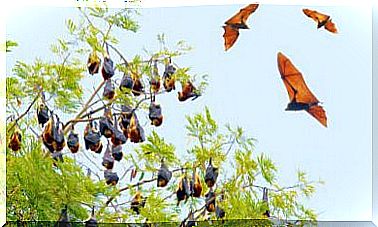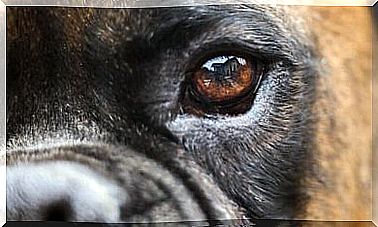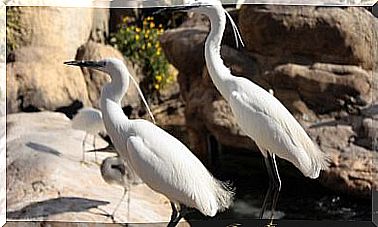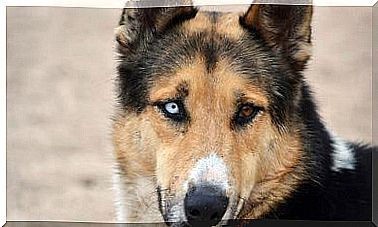Snow Leopard: Characteristics, Behavior And Habitat

The snow leopard is one of the most important predators in the mountain food chains of Central Asia. Feared and admired by Tibetan cultures and their shepherds, this emblematic carnivore can live in places that reach up to 6,000 meters in altitude.
Precisely, the inhospitable and isolated habitat, together with its shyness and fur, make this feline one of the biggest unknown carnivores on our planet.
Snow Leopard Characteristics
Although it is smaller than other large predators, it can reach 75 kilos. However, they typically weigh between 30 and 60 kilos. In addition, they have a sturdier and shorter body than other cats. Despite this, it has one of the longest tails among all feline species.
Its coat is thick and in different shades of gray, with black spots on rosettes and a white chest. Also, there are gradations of yellowish or brown color in some parts of your body. Their eyes are pale green or gray, something rare among big cats.
The snow leopard had to adapt to live in the cold and has several adaptations. Among them, its compact body covered with a thick layer of hair. Furthermore, has relatively small and hairy ears, large claws, which serve as rackets snow, similarly to the polar bear.
Its tail is one of its main adaptations, not only to the cold, but also to its rocky habitat. It is full of fat and covered in fur, which allows him to wear it as a scarf at night. The length of its tail allows an enormous balance on the cliffs where it lives. Due to its relief, this animal takes one of the longest jumps in the animal kingdom.

The snow leopard has a very long nasal cavity, which warms the cold Himalayan air. One of its curiosities is that this feline cannot roar. This is because, despite its hyoid being similar to that of the so-called big cats, it does not have other morphological adaptations in the larynx.
Snow Leopard Behavior
Like other felines, they are solitary animals that are only found for copulation and for the coexistence between mothers and offspring in the first months of life. Typically, each specimen has its territory. This area can reach 200 square kilometers, as it depends on the volume of prey in that space.
The snow leopard makes markings by urinating or rubbing itself against rock, a way to communicate and indicate its territory and routes. They are twilight cats, which are active during sunset and sunrise.
As for their hunting habits, they can be gatherers, but they are also good hunters. They can attack prey up to 4 times heavier, such as horses or camels. Their most common prey are wild goat species, such as the bharal, the markhor and the argali.
Sometimes the snow leopard attacks the livestock of traditional herders in Nepal and other areas. There is a conflict similar to what happens in Europe between cattle and wolves. Conservation organizations and governments try to mediate this conflict to prevent the extinction of this species.
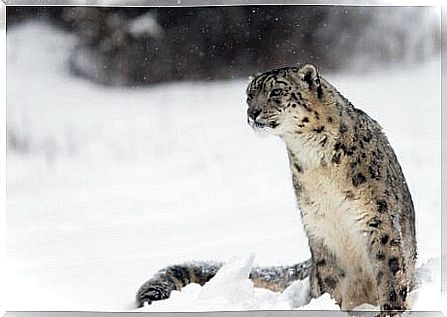
Snow Leopard Habitat
The snow leopard is found in mountainous areas of Siberia, Russia, Pakistan, Mongolia, Tibet, India, Nepal and Uzbekistan. In these areas, they live between 2,000 to 6,000 meters, on the slopes of mountains and snow-capped peaks.
Despite its relatively large distribution. It was recently declared less of a threat. However, 4,000 of the 9,000 snow leopards are threatened by poaching and climate change.
Despite this, the inhabitants of the mountainous regions of this emblematic animal, struggle not to lose it. The snow leopard is part of the culture of all the countries where it lives and has become a symbol of numerous heraldic elements.
These people are aware of a frightening reality. If the snow leopard disappears, much of the culture of the last Asian mountain peoples will disappear. We hope, therefore, that this beautiful cat is still alive.

